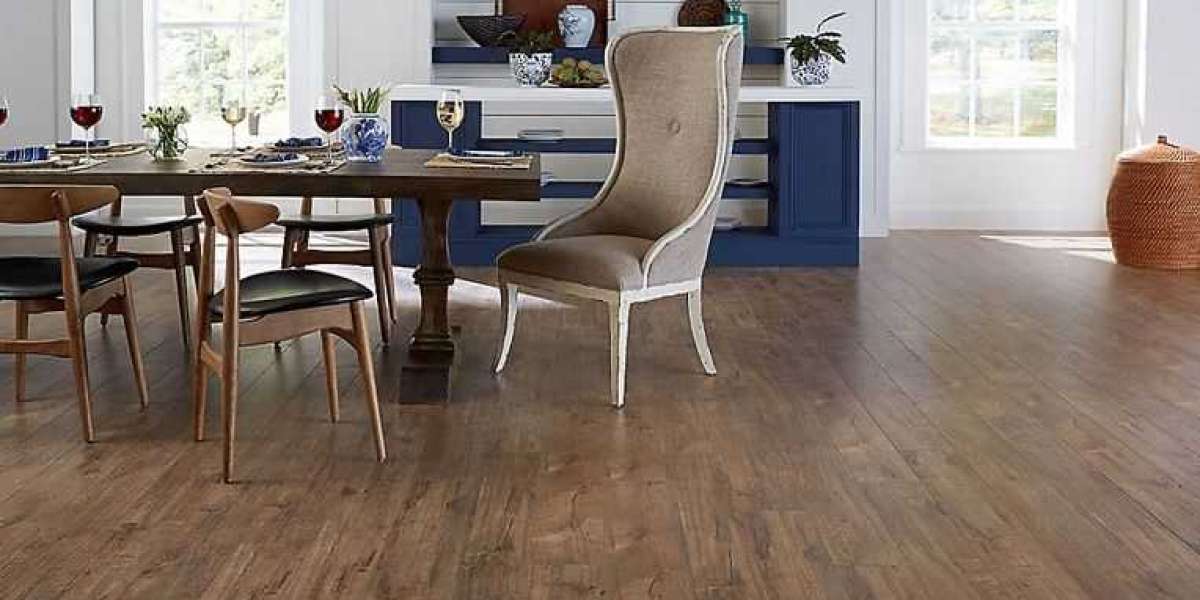Luxury Vinyl Plank LVP flooring has rapidly gained popularity among homeowners, contractors, and designers due to its impressive durability, versatility, and aesthetic appeal. With advancements in technology, LVP flooring now offers the look and feel of natural materials like wood and stone, while maintaining a level of practicality that traditional flooring materials often can't match. This article will explore the benefits of LVP flooring, its types, installation process, and why it’s the ideal choice for your next home renovation project.
What is LVP Flooring?
LVP flooring, or Luxury Vinyl Plank flooring, is a type of synthetic flooring made from multiple layers of PVC (polyvinyl chloride). It is designed to mimic the appearance of hardwood or stone while offering superior resilience and ease of maintenance. LVP is available in a variety of textures, colors, and patterns, making it a versatile option for virtually any room in the home.
Benefits of LVP Flooring:
Durability: One of the most significant advantages of LVP flooring is its durability. The multi-layer structure of LVP makes it resistant to scratches, stains, and dents, making it an excellent option for high-traffic areas, pets, and families with young children. Unlike hardwood floors, LVP is less likely to warp due to moisture, making it ideal for bathrooms, kitchens, and basements.
Water Resistance: LVP’s waterproof properties are a game-changer for many homeowners. Whether you’re installing it in a bathroom, laundry room, or even a basement, LVP’s water resistance ensures that it won’t swell or warp from exposure to moisture, unlike natural wood or laminate flooring.
Easy Installation: LVP is known for its ease of installation. Many LVP products feature a click-lock installation system, allowing homeowners to install it themselves without the need for glue or nails. This DIY-friendly feature can save both time and money during the installation process.
Low Maintenance: LVP flooring is incredibly easy to clean and maintain. Regular sweeping or vacuuming, along with occasional mopping, is typically all that’s required to keep LVP floors looking new. Because it doesn’t require sealing like hardwood, LVP is low-maintenance, making it a practical choice for busy households.
Aesthetic Appeal: LVP flooring comes in a wide range of styles, from designs that replicate the look of classic hardwood to those that resemble natural stone or marble. The advanced printing technology used in LVP manufacturing ensures that these designs look realistic, providing homeowners with a wide selection of aesthetically pleasing options.
Types of LVP Flooring:
Glue-Down LVP: This type of LVP flooring requires adhesive to secure the planks to the subfloor. It’s often used for commercial applications or areas with high foot traffic because it provides a strong bond.
Click-Lock LVP: The most popular LVP style for residential use, click-lock LVP features interlocking edges that make it easy to install without glue or nails. This style is also ideal for DIY projects.
Loose Lay LVP: Loose lay LVP is laid directly onto the subfloor without adhesive or interlocking systems. This option is typically used in spaces where quick removal may be required, such as rental properties or temporary spaces.
Installation Process:
The installation process for LVP flooring can vary depending on the type of planks being used. However, most options are designed to be easy to install, even for those with little experience. Here’s a basic overview of the steps involved:
Prepare the Subfloor: Ensure the subfloor is clean, dry, and level. Any uneven spots should be smoothed out to create a stable foundation for the LVP.
Lay the Planks: Begin laying the LVP planks from the corner of the room, working your way across the space. For click-lock LVP, simply connect the planks together. For glue-down options, apply adhesive to the subfloor and then press the planks into place.
Trim and Finish: Trim the last row of planks to fit along the wall, leaving a small gap for expansion. Install baseboards and molding to finish the look.
Why Choose LVP Flooring for Your Home?
LVP flooring is an excellent choice for homeowners seeking a combination of style, durability, and affordability. Its wide range of designs ensures that you can find a look that suits your personal taste and complements your home’s décor. Whether you’re renovating a single room or your entire house, LVP flooring offers a solution that’s both practical and visually appealing.
Conclusion:
From its resistance to moisture to its wide variety of styles and easy maintenance, LVP flooring is quickly becoming a top choice for homeowners looking to renovate their spaces. Its affordability, durability, and aesthetic versatility make it a smart investment that can last for years. If you’re considering a flooring upgrade, LVP may just be the perfect option for you.








